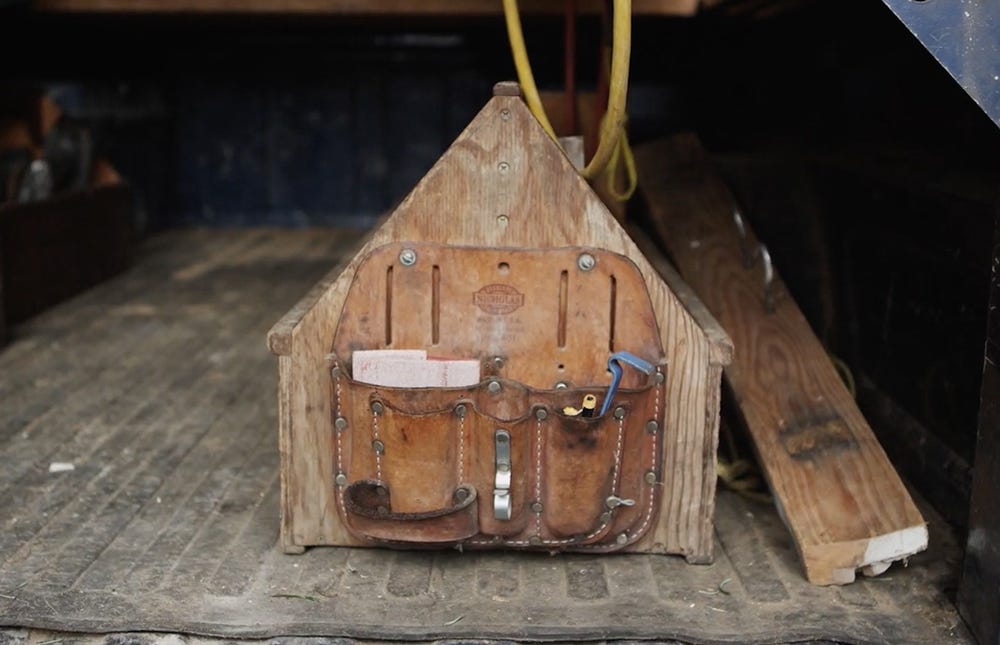
"Today, we’re talking about the ideal future of shop class—and what we can do to make it happen."
Welcome to The Death of Shop Class. In this series, Sarah Smith of Sawhorse Revolution—a Seattle-based nonprofit fostering confident, community-oriented youth through the power of carpentry and craft—goes into the history and evolution of shop classes in the United States public education system. In this final installment of our three-part series, Sarah describes the ideal future of shop classes and what we can do to bring it about.
Despite declining numbers, shop class is thankfully still around, and there are many groups working for its reinstatement, and many approaches to consider in the new wave of shop.
Unfortunately, if these efforts aren’t supported, our skills gap will continue. Fewer and fewer members of younger generations are choosing to enter the trades, leaving a major gap in the workforce as older generations of trades workers retire. There’s still time to turn it around, though. So today, we’re talking about the ideal future of shop class—and what we can do to make it happen.
Strategy 1: Teach children from a young age that the trades are viable
In an ideal world, shop classes and other vocational education opportunities would be accessible to all young people. These types of courses connect students to each other and to their communities, and introduce them to meaningful jobs and pursuits at a young age. Treating shop class like other public school core curriculum classes normalizes these interests, allowing children to view a career in the trades as an option for their future. We can look to European countries for inspiration on how to let children explore their interests in public schools: The German school system, for example, includes vocational education and allows students to choose their desired path before graduating. There are also many kids’ carpentry organizations around the country, such as our friend organization Girls Build. Girls Build serves hundreds of girls in the Pacific Northwest, encouraging in-the-moment empowerment while also ensuring that girls have the same early access to trades skills that boys do.
Whether they decide to pursue a four-year degree or go into the trades, young people need to be taught that both options are viable (and it doesn’t have to be one or the other). When society treats this choice as an “either/or,” it reinforces the division between going to college or working with your hands—it tells students that they’re either smart or they’re able to build stuff, which is a false dichotomy. While there are many resources in high schools for helping students decide which college is best for them, support for students interested in the trades is very limited. In fact, many people that go into the trades at a later stage in life reveal that they were never taught that a career in the trades was an acceptable life path—so they simply never pursued it until after working in a career they thought they had to go into.
One way to fix this issue is to reintroduce vocational education advocacy in education graduate programs around the country. School administrators no longer receive instruction on the benefits of shop class and hands-on learning like they used to, leaving them poorly equipped to promote an underrepresented (but necessary) part of education. We can’t fix what we don’t know is broken—teaching the importance of shop class to those working in education is one of the best ways to get shop classes back in public schools.
Strategy 2: Open the field with diversity, equity, and inclusion—improving the industry from the inside out
What good is shop class if students don’t feel welcome in the trades workforce? Before we can call for action in trades education, we must ensure the workplace is accepting of everyone who wants to be a part of it. The trades are still incredibly homogeneous (as many industries in the US unfortunately are), so we must work to make it welcoming to underrepresented communities.
Positive role models are an important part of keeping the trades—and interest in the trades—alive. The tech industry is a great example of this. Young people can look to Bill Gates or YouTube’s CEO Susan Wojcicki for inspiration, or they can find their own personal mentors to help them navigate the industry. Having a personal mentor who has faced the same challenges you do is extremely helpful for creating a supportive community of people who respect and value you and your skills. For marginalized people—notably women, members of the LGBTQ+ community, and people of color—this is especially important, as they have consistently been taught that they’re not allowed, not important, and not equipped to work in the trades. Increasing representation in the trades will help encourage younger generations by showing them that there is a place for them in the industry and in hands-on work in life.
Strategy 3: Get involved in local groups supporting the trades
Education, trades, and advocacy groups from around the country are finding creative ways to engage people in the trades. Seattle, in particular, has a remarkable number of these organizations.
Here are a few:
Part of the Seattle Colleges, this full-time school offers degrees in cabinetry, carpentry, boat building and repair, and pre-apprenticeship certification, and has a full campus in Central Seattle.
Regional Pre-Apprenticeship Collaborative
RPAC, as it’s called, has a mission to build a regional pre-apprenticeship system which provides a direct and sustainable pathway to concrete, high-paying careers with benefits for local, low-income residents (specifically, women and people of color). This collaborative is committed to funding and supporting outreach, recruitment, education, and training across the region—it results in the systematic entry of local, highly qualified people of color, women, and underserved residents into construction apprenticeships and ensures these apprentices succeed and journey out.
This alternative public school program allows students to gain school credit from school-day crafts and vocational learning and currently offers two carpentry classes a semester: one at Rainier Beach High School, the other at Ingraham High School.
Since 2001, the ACE Mentor Program of Washington has helped more than 2,500 students learn about careers available in architecture, engineering, and construction. Each year, students are divided into teams and are assigned a hypothetical project. They work diligently alongside mentors to prepare for a final presentation where they showcase their year-long effort.
We’re proud of the work we’re doing at Sawhorse, so we couldn’t help but give ourselves a plug. Sawhorse fosters confident and community-oriented youth through the power of carpentry and craft. We team high school students with professional carpenters and architects to work on inspiring community projects, including tiny homes for people experiencing homelessness, a social justice library, and an octagonal tree house 30 feet in the forest canopy. Students are able to see the trades as a fulfilling, creative, and viable career—and they see themselves as powerful individuals and community members capable of solving problems and enacting change.
We would love to keep the conversation going and hear from you. Feel free to reach out to us on Facebook and let us know about any groups you know of that are supporting the next generation of craftspeople, as well as all of the incredible people working toward a more powerful (and power tool full) world.
Catch up on part one and part two of our Death of Shop Class series, and check out the Dunn Solutions blog for expert and trusted advice for your next project.



